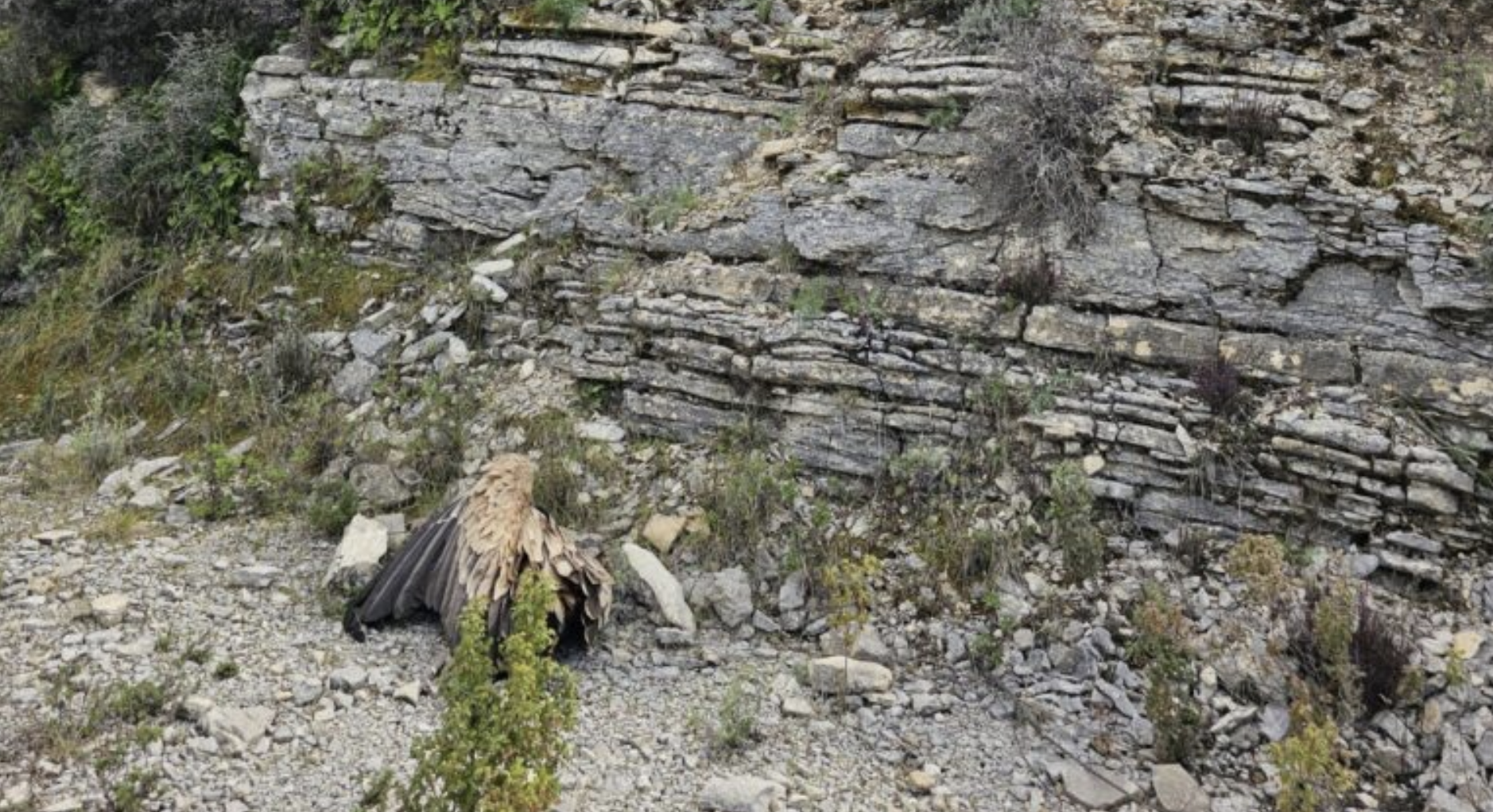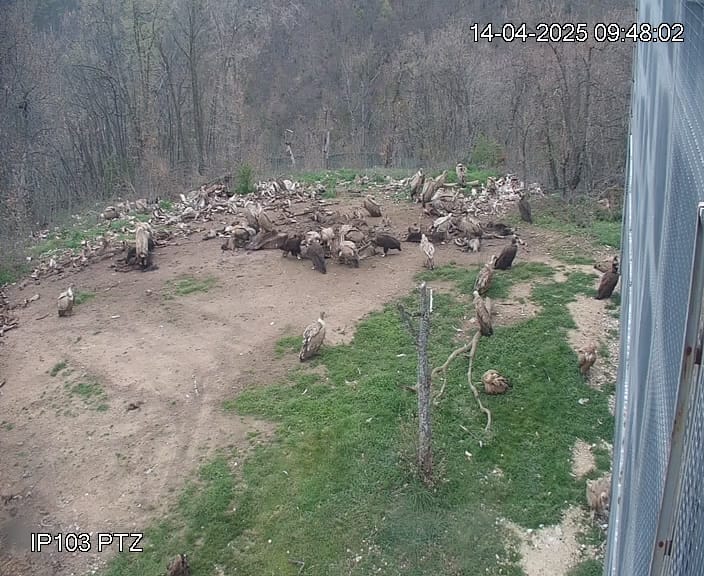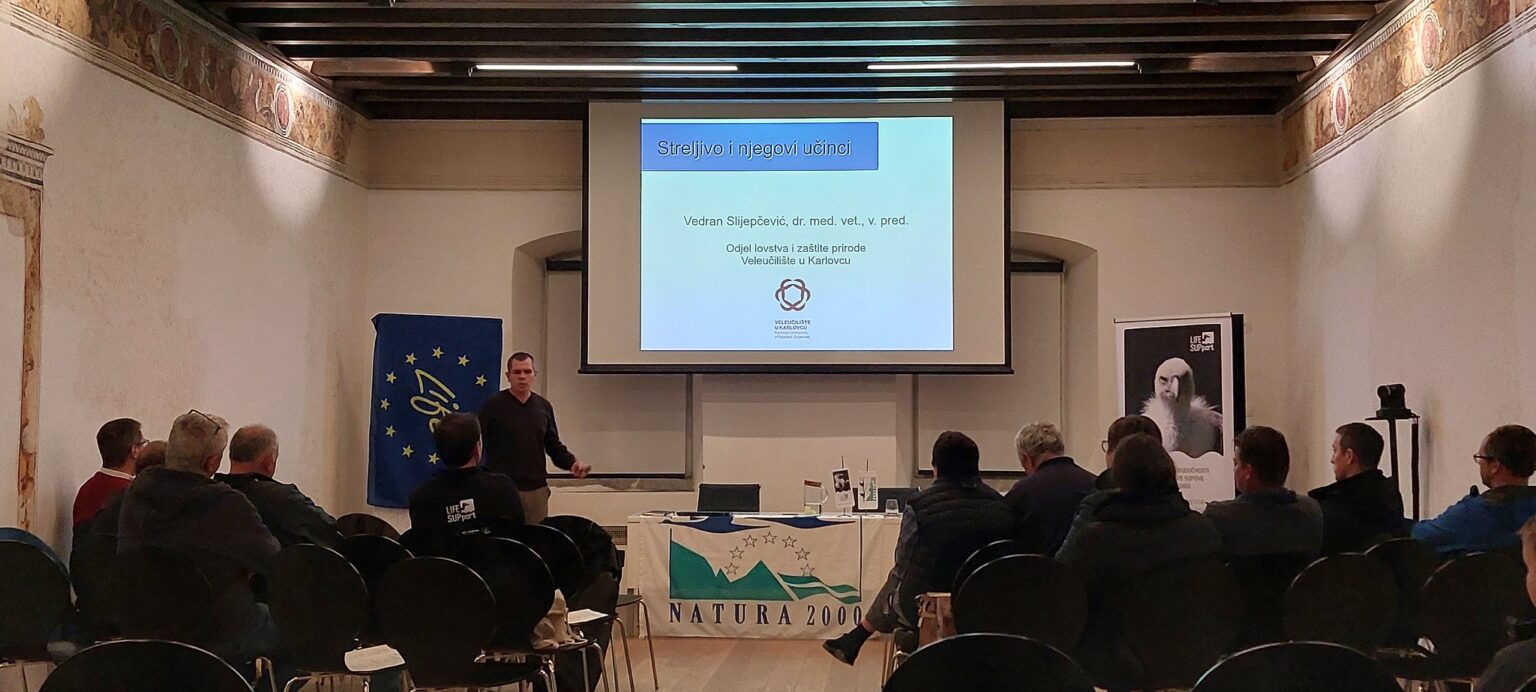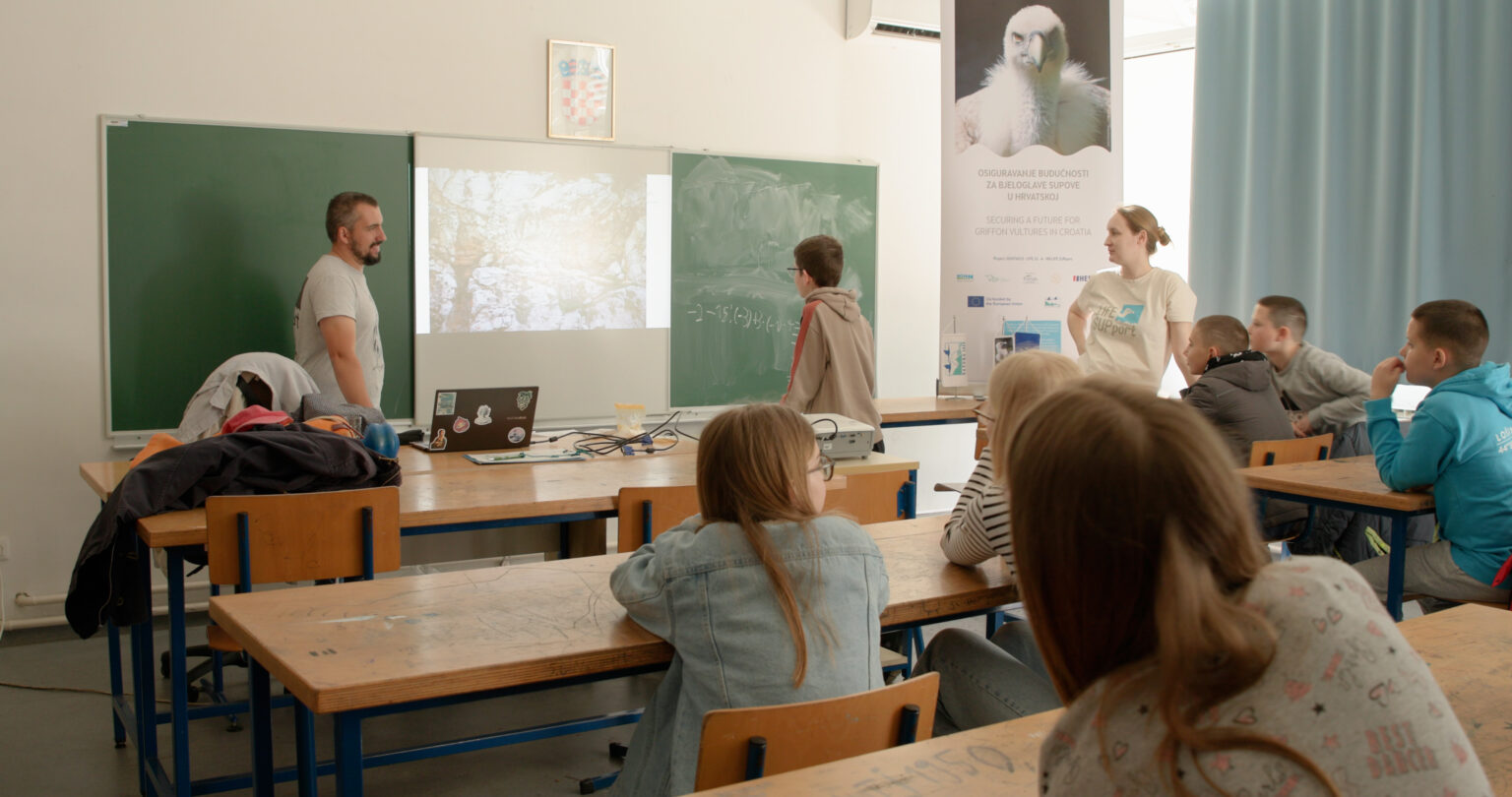
The Vultures Back To LIFE project aims to establish a nesting population of the Cinereous Vulture in Bulgaria through the reintroduction of the species in the Balkan Mountain range. To support the integration of the species in Kotel Mountain, the project recently carried out some field activities to attract potential pairs.
Vultures at Kotel Mountain

The first vulture species that was reintroduced at Kotel Mountain was the Griffon Vulture, and now it’s the turn to bring back the Cinereous Vulture. It seems that Kotel Mountain, as a part of the Balkan chain, is very much preferred by scavenging birds, because of the perfect mix of old forests and open area, where free-ranging sheep, horses, cattle and buffaloes graze.
Supporting the integration of Cinereous Vultures
The Fund for Wild Flora and Fauna is attempting to attract the Cinereous Vultures released in the Kotlenski Balkan region through building artificial nests on trees and placing them along with Cinereous Vulture models in the birds’ release region. Hopefully, the nests will be occupied soon with their breeding season about to start and we will be able to see some chicks hatching in these artificial nests this year.
Parts of the field activities within the project are carried out jointly with the Association of Arborists in Bulgaria.
Vultures Back To LIFE

Led by the wildlife conservation charity Green Balkans, with activities also implemented by the Fund for Wild Flora and Fauna, and bringing together partners from Bulgaria, Spain and Germany, Vultures Back to LIFE aims to reintroduce the cinereous or Eurasian black vulture to Bulgaria. The team will transfer and release around 60 birds, some from captive-breeding, but mostly coming from wildlife rehabilitation centers in Extremadura (Spain) into the wild in Bulgaria as well as creating supplementary feeding stations and improving populations of wild herbivores, improving the nesting conditions and creating artificial nest sites and tackling some of the major threats to vultures in the country such as insulating electricity pylons and illegal use of poison in the nature.




